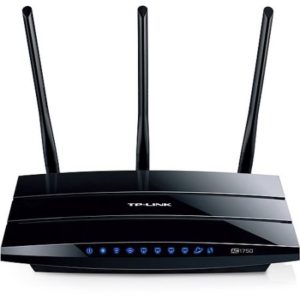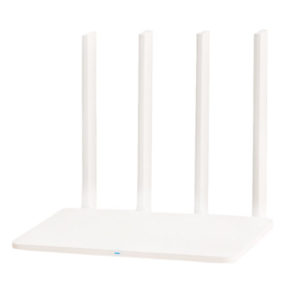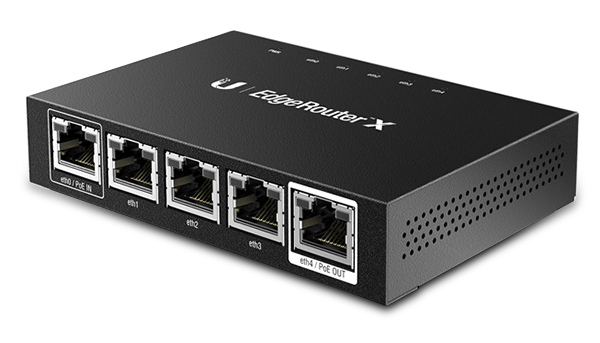Even more router reliability reflections, 4 years on
Wow so it’s been 4 years since my last “Router reliability” thoughts, and so much has changed in the landscape, yet so much has stayed the same too.
There’s still the problem of downright terrible routers being hocked off by ISP’s, left, right & center for free under the guise of “valued at $299”, when in reality they’re paying ~$12-14 a router (Yes, I’m looking at you Spark).
Where previously VDSL2 was the “new” tech, and ADSL2+ was commonplace, UFB is the “new kid on the block” with VDSL2 being even more popular than before. Gigabit Fibre has even arrived, so where almost everybody I knew on UFB was on a 100mbps down and 20mbps up plan, that’s quickly changing to 1000/500, which presents a new set of challenges in it’s own right.
Not to mention router interfaces are as abysmal as ever, ISP’s are competing to see who can ship out the cheapest and nastiest router for free, and even Geekzone tried (and abysmally failed like I told Mauricio it would) to ship a router out “to the masses”
So here’s my thoughts on where things stand at present, and where they’re going to go:
I’d first like to take the chance to say “I told you so”, you see back a short while ago, Geekzone ran a “Geek router contest”, where the geeks all submitted their ideas to Geekzone, who partnered with Spark, to “Come up with ideas for a cool router”.
Basically every nerd on the site had a wet dream and came up with the most stupid ideas possible for a router, stuff that 99% of the population had never heard of, let alone cared about.
So I came up with some ideas (Here: http://pressf1.pcworld.co.nz/showthread.php?134210-Inspired-by-Geekzone-What-I-want-to-see-out-of-a-router ), and even began working on it myself, it actually came to fruition as a firmware that *worked* well on the Xiaomi Mi WiFi Mini router, so you had a router that you could drop off at your grandmas place to replace her cheapo one from her ISP for about NZD$30, and your grandma could even get it going, it was so simple!
The problem is it was only a 100mbps WAN port, which meant that on a 100/20 connection you never quite got the 100mbps, whereas if you had a router with a Gigabit WAN port you’d get around 105mbps. That in itself isn’t a dealbreaker, but it immediately ruled out any 200mbps plans.
Bring on late 2016 though, and Chorus announce Gigabit, which means there’s no way that a 100mbps port is going to cut the mustard.
In my previous reflections, I’ve commented that the TP-Link TL-WR1043ND is a reliable router when flashing Gargoyle on it, and well-priced. To this day, that stands true, and I would take that over any ISP-supplied router. For $90 you get a router with a Gigabit WAN, 4x gigabit LAN ports, and some *solid* WiFi range! It’s missing 802.11ac and it’s also missing 5Ghz, but for something entry-level, it’s still a solid contender to this day, and I personally only stopped using mine around 2 months ago!
Even with the advent of 802.11ac since my last reflection, it was still an incredibly strong contender, but when moving house of late I decided it was time to check out the Archer C7, and due to some stupid decision by previous tenants to put the Fibre ONT in a bedroom wardrobe (To hide it from the Landlord?), it meant the TL-WR1043ND was relegated to the role of “PPPoE / NAT device”, no WiFi.
 Before settling on the Archer C7, I made the mistake of trying the Archer C2 and the Archer C5, none of which supported Gargoyle which presented a reliability problem. After 3 reboots in 10 days, I decided the C5 was simply not good enough, and off to get the C7 and flash Gargoyle I went. It, like the TL-WR1043ND, has ticked along with 100% reliability ever since. I have no complaints about the hardware, but software-wise the TP-Link routers are almost as bad as every other one out there. Thankfully Gargoyle resolves that side of things, and everything is right in the world again, I’ve not had to restart the Archer C7 since I got it (Due to running Gargoyle immediately, not wasting time on the factory standard firmware).
Before settling on the Archer C7, I made the mistake of trying the Archer C2 and the Archer C5, none of which supported Gargoyle which presented a reliability problem. After 3 reboots in 10 days, I decided the C5 was simply not good enough, and off to get the C7 and flash Gargoyle I went. It, like the TL-WR1043ND, has ticked along with 100% reliability ever since. I have no complaints about the hardware, but software-wise the TP-Link routers are almost as bad as every other one out there. Thankfully Gargoyle resolves that side of things, and everything is right in the world again, I’ve not had to restart the Archer C7 since I got it (Due to running Gargoyle immediately, not wasting time on the factory standard firmware).
It’s a great step up from the TL-WR1043ND, it has 802.11ac, it has 5Ghz, WiFi goes up to 1750mbps (I can get ~250mbps from my Cellphone testing to fast.com so it’s not too shabby), and if you find yourself wanting “the next model up”, this is the one to go for. The range on them is still fantastic, especially when compared with most “bundled” routers your ISP will throw in with your plan. Mine will still work a good 50m down the street from my property.
For VDSL2 connections, they work fantastically as well when paired with a modem. The DrayTek DV120 is no longer around, but the DrayTek DV130 which does VDSL2 as well as ADSL is (Though significantly higher priced, around $190 from PBTech), is a perfect match. If you have ADSL2+ or VDSL2, you simply *cannot* beat a DV130 and a TP-Link Gargoyle router.
I’ve tried the Netcomm NF4V, the Innbox V50-U (Almost identical to the NF4V), the V51, those nasty Energy Imports routers from Callplus / Slingshot, the latest Huawei routers that Spark are giving away, they’re all just as bad as things were 5-odd years ago when I first wrote about this. THINGS HAVEN’T IMPROVED AT ALL!
It’s actually really sad, when you think about it, that every single router vendor pushes the same junk… It’s all about making the sale, not about making something reliable, or fixing the mistakes from the previous model, just peddle the next box out the door to make a few more bucks and carry on with their life with no regard to what they’re actually offering.
Anyway, I would have happily stuck with my TL-WR1043ND and the Archer C7, but then “The Gig” came along, and unfortunately both devices max out around 160mbps of NAT throughput. The gigabit plans basically mean I not only need to sustain 1000mbps down, but up to 500mbps upload at the same time. I *could* dedicate a PC to the job, which would be fine, but not when I have friends and family looking at Gigabit asking “Soo…. what do we do?”.
And then along comes the Ubiquiti EdgeRouter-X!
This unit is *nice*, it’s tiny (About 1/3 the side of the Archer C7), in terms of performance it will do ~920mbps down and around 800mbps up, so it’s basically more than the “Gig” plans in New Zealand will be able to push through it. The interface is the standard Ubiquiti web interface, which I really quite like myself (Though it’s a little confusing at first it’s not like the other ISP-supplied junk which requires a PHD and 5 years of prior experience to operate).
It also just ticks along happily, no fuss, not a single reboot in the couple of months since I put it in.
Best part is: They’re only ~$125!
So this will work with your current WiFi, or “do the right thing” and get yourself an Archer C7 running Gargoyle and pop it in to an “Access-point only” mode by changing the WAN to be disabled and bridge to LAN, and you’ve got yourself the best possible combo you can get for UFB.
There are other routers out there which will do Gigabit, but most of them are going to set you back somewhere around ~$600 for the cheapest ones. Things like the Nighthawk R8000 aren’t cheap, around $500, and even then, they’ll still only do 500mbps (So you’re potentially missing out on HALF your connection capability). On top of that, they’re flaky routers too and semi regularly die under load.
The only thing you’ve got to worry about then is that your ISP won’t actually be giving you those higher speeds internationally, and if you’ve got the EdgeRouter-X then you can be sure the issue is *not* your router! The only thing worth checking is that you’ve got yourself a decent Cat6 cable (Coz although Cat5e is supposed to be able to do gigabit, in my experience the cables I had, although they were getting a little long in the tooth, actually became a bottleneck for me).
Now let me be very clear here: It’s 2016, soon to be 2017!
There’s no good reason why you can’t get several hundred megabits to Sydney, Australia.
There’s no good reason why you can’t get similar speeds to San Francisco, California.
If you’re doing a speedtest on speedtest.net and choose, say Telstra in Sydney, Australia, I currently get anywhere from 400 -> 600mbps, even during peak time.
If you’re doing a speedtest on speedtest.net and choose, say Monkey Brains in San Francisco, California, I currently get anywhere between 150 -> 300mbps, even during peak time. Likewise, testing at fast.com gives similar speeds.
If you’re one of those unfortunate souls who is with a provider and you’re only getting, say 4mbps to California (Yes, sadly, I’ve seen that on a “Gigabit” UFB connection), it’s time to look at another ISP, because you’re able to get faster speeds over ADSL.
I’m not suggesting it’ll be flawless speeds all day, every day, but if you’re spending ~$150 a month on an internet connection, your ISP shouldn’t be over subscribing their international circuits like they would have 10 years ago. International data is *not* that expensive these days and you should most certainly be voting with your wallet.
It definitely pays to ensure your setup is as high quality as you can though, it ensures the “finger pointing” from your ISP can’t come your way. As of October 2016, Chorus said they weren’t hitting congestion anywhere on their UFB / VDSL2 network anywhere. This means if you’re having problems, and you’ve got yourself one of the routers I’ve recommended, the problem IS your ISP.
So do yourself a favor, if you’re on ADSL2+ or VDSL2, get yourself a DrayTek DV130 for the modem. If you’re on UFB, get a Ubiquiti EdgeRouter-X to act as your router. Then, in both cases, get either a TP-Link TL-WR1043ND if you’re on a budget, or if you want to splash out, pick up a TP-Link Archer C7, and run the Gargoyle Firmware on them for reliability.
 Chilling_Silence's blog
Chilling_Silence's blog


Excellent. Great to get this update – really good info. Thanks.
Yeah I kinda avoided going in to every single router details I’ve used and more just glossing over why they’re all still shit… The same damn problems keep plaguing them even half a decade on, it’s shocking! Kinda thought it was better this time around to focus more on why I’m using what I’m using 🙂
I have 5 teenagers in my house, slightly rural, so still on ADSL. With a good old Vigor120 and a TL-WR1043ND recommended by you years back, I can have 4 kids streaming different online services all at once, and still get my work-from-home IT done. (Gargoyle restrictions are way better than grounding too!!) You sir, are a life enabler. I’ll use your advice to help friends/family in fibre areas too.
My pleasure, glad it’s worked so well for you too 🙂
Does the Edgerouter show bandwidth usage per IP like Gargoyle does?
There’s a traffic analysis page, but to be honest I’ve turned it off, as far as I’m aware it negatively affects throughput by disabling certain hardware NAT performance improvements, and however minor that may be I’ve not been interested in trying that out.
WARNING 1: Current firmware (1.9.0 and earlier) has been reported to brick recent models of Archer C7 v2 (Early 2016 and later)
Any comment on this warning on the Gargoyle download page Chill?
I have been flashing 1.9.0 on Archer C7 v1 for almost a year now, and 1.9.1 on v2 for around 6 months? Zero issues 🙂 Have setup somewhere a little over a dozen for friends, family, colleagues and customers.
Thanks for that Chill. I greatly value your advice.
My pleasure, glad I could be of help 🙂
Hello, Great article! have you ever experienced difficulties in port forwarding with Ubiquiti EdgeRouter-X?
Yes, I did, but to be honest that was because I wasn’t port-forwarding from the correct interface. I changed it so I’m forwarding from pppoe0 (WAN) to switch0 (LAN) and now it’s all good 🙂
Hello – I’m a newbie to UFB and have read this post. Informative but I’m left confused. You say to do ourselves a favour get an EdgeRouter-X to act as your router and then attach a TP link router AS WELL. Router to Router! So, just to understand, you recomment this as the EdgeRouter has no wireless and so you need another router to do this – am I correct? If I am then I would consider this but what to do about the phone line? The RJ11 plugs into the current Sshot router telephone port. How would I resolve the issue of the EdgeRouter not having a phone port please? Thank you.
Correct, you’re spot on!
The EdgeRouter-X is the best at just being a router, whereas I use the Archer C7 running Gargoyle JUST for my WiFi. Two devices that are the best at doing one thing each.
You can get what’s known as an “ATA Device” an Analog Telephone Adapter. This essentially converts your old analog phone into a VoIP-phone. I’m presuming you’re with iTalk, through Slingshot? Alternatively you can use a Softphone on your PC / Cellphone and have your landline with you anywhere, or you can call Slingshot ask them if they’re able to use the port that’s on the Fibre ONT to do that.
Ok, so if I ditch my Sshot router and use an EdgeRouter-X with Cisco SPA122 and DECT phone, then will I get a better experience? If so, then how please? I’m not with iTalk, just with Sshot.
Yeah the SPA122 is a nice solid little unit. You’ll have to ask Slingshot for: SIP Username, SIP Password, SIP Server name / IP
And yeah, it will basically *never* need rebooting, you’ll never have issues with not being able to connect to your WiFi… I hate those Energy Import routers they use with a passion, they’re abysmal!
Do you know if the Archer D7 is any good?
I’m stuck with ADSL, and a D7 would be a bit cheaper than the DV120 (which is still available) & C7 combo.
We have Fibre at home, could I just run the Archer C7 as a replacement to the el cheapo Spark router??
Nope, they’re still using the same standard firmware as the other Archer series, which is flaky at best. Unfortunately, you get what you pay for. If you’re on ADSL2+, then grab a DV120 for sure, they’re still *amazing* units and reliable as hell, it’s just the DV130 has support for VDSL2 which is about all it has going for it over and above it.
Yes and no. The C7 really needs Gargoyle firmware to be happy, it’s not too good on the standard TP-Link firmware. If you’re OK with flashing that, then awesome, it’s gonna be a damn good setup that you’ll be really happy with!
Secondly, you’ve gotta call Spark and get them to change your connection to “untagged”. This means taking it off VLAN10. The C7 / Gargoyle firmware doesn’t natively support VLAN tagging on the WAN port like Spark requires on their connections, so you have to get them to change your connection to be Untagged. It should be free, and will usually take around 24-48 hours. You’ll know it’s happened because your current connection will stop working, and that’s when it’s time to pop in the C7, change the “WAN” port to be PPPoE, and pop in your Spark Username / Password.
If you tell Spark you’re wanting to change your connection to be Untagged so you can use a different router, they’ll likely understand, but often times the first-level helpdesk monkeys struggle with knowing what you’re on about in my experience with calling them…